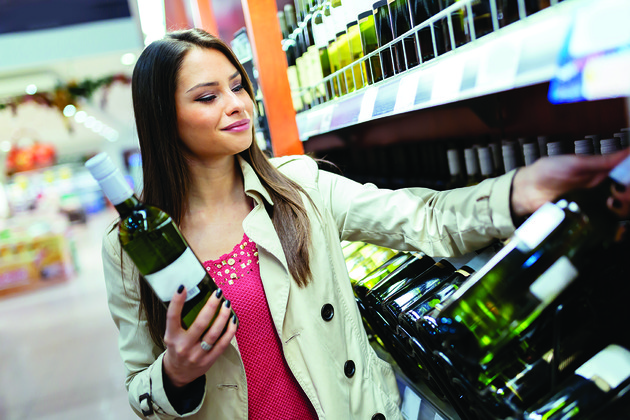
LWF: Private label wine grows market share to 40%
Private label wine continues to encroach on the market share of branded wine, it has been revealed - while private label for the entire grocery sector has already eclipsed branded FMCG products.
In still wine, private label has grown its share of the market from 39.9% in 2018 to 40.4% in 2019, building on a steady rate of growth over the past few years.
This isn’t the only sector of the market where private label is growing.
According to Kantar, across the total grocery sector, private label now accounts for 50% of sales – putting it above brands, which have a share of 47%.
The remaining 3% accounts for ‘unbranded’ products mostly found in Fruit & Veg.
The switch came in 2017: before that, households were buying brands over private label, also known as ‘own label’ or supermarkets’ ‘own brand’.
Could wine possibly follow suit?
“For the past three years, it’s been growing at a faster rate than brands,” Kantar’s Andy Crossan told a London Wine Fair (LWF) audience and panel at a debate on the subject.
“A key factor has been the rise of the discounters: 90% of their sales are from private label SKUs. With that has come a certain amount of trust that’s been built up in terms of quality. They’re renowned for their alcohol offering in spirits and wine now and have won many awards for them. That’s led a lot of other retailers to follow suit.”
In terms of average spend, shoppers are increasingly opting for private label like Tesco’s Wairau Cove from New Zealand, which “look and feel like brands” but are actually controlled by and exclusive to the supermarket.
Consultant Angela Mount, who was a former Sommerfield head buyer, noted that own label hit its stride in the late 1990s for offering a point of difference from brands and instating a good, better, best hierarchy for consumers to explore.
She said: “Around the time of the backlash against own brand in the 1980s, the big Australian and New Zealand brands stared hitting the market. But people soon realised there was no diversification or point of difference. All you did was compare the price of Oyster Bay in Sainsbury’s to the other supermarkets. Back then, own brand was very much seen as entry level – it was the embarrassing thing you didn’t want to put on the dining room table.
“By the early 2000s, that had changed. We started to experiment more. In 2002, we bought in the first Argentinian Sangiovese and Bonarda. It was unheard of: you couldn’t have done that ten years before. Now what’s happening – even in the discounters – is that retailers are adding the layers. It’s no longer bottom shelf. I always used to say, we need to take your customer by the hand and say ‘trust us. If you’re spending £6.99, try the next level up’. Private label is a great way to do that.”
Keywords:
- wine
- New Zealand
- LWF
- Wines
- spend
- brands
- average
- private label
- label
- private
- own
- terms
- branded
- household spend
- average household
- average spend
- average household spend
- tesco’s wairau cove
- former sommerfield head
- consultant angela mount
- supermarket consultant angela




